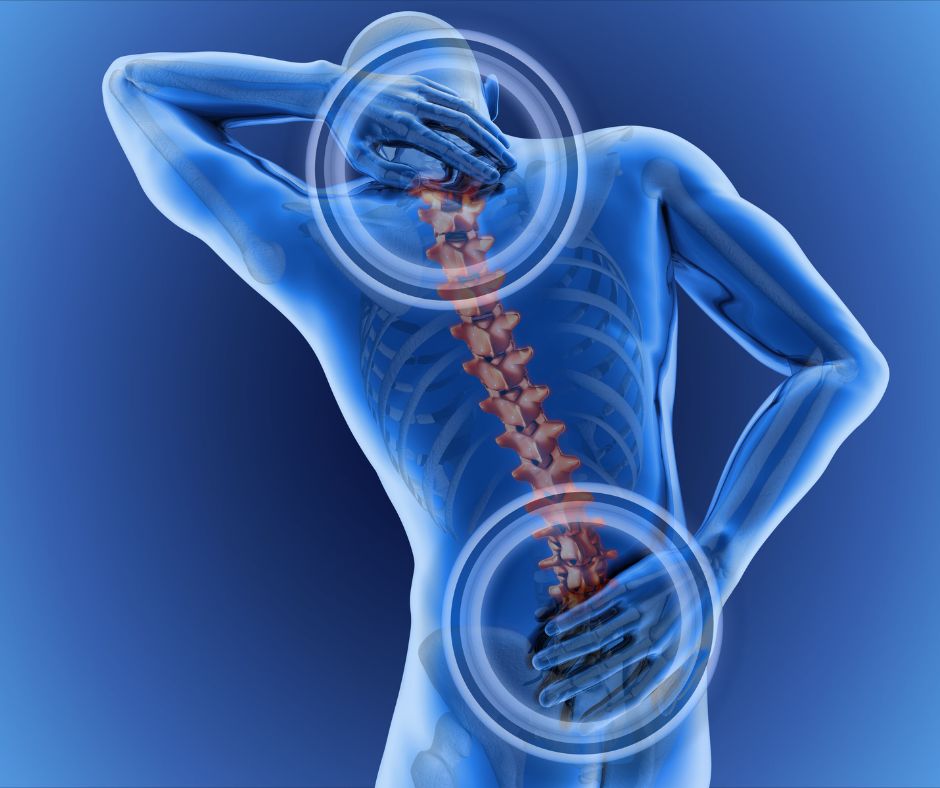Back pain is a prevalent musculoskeletal condition that affects millions of individuals worldwide. Osteopaths offer a holistic approach to diagnosing and treating back pain.
Here we aim to provide an in-depth understanding of how osteopaths approach back pain, including the symptoms they look for and the targeted areas of the body involved in potential treatment.
Symptoms of Back Pain
Back pain can manifest in various ways, ranging from acute to chronic, and can be accompanied by several symptoms. When evaluating a patient, osteopaths pay attention to the following symptoms:
1. Pain intensity, location, and radiation
Assessing the severity and exact location of pain, along with any radiation to other areas, helps osteopaths identify potential underlying causes.
2. Range of motion
Restrictions in spinal movement, such as limited flexion or extension, may indicate joint dysfunction or muscle tension.
3. Muscle weakness or imbalance
Assessing muscle strength and imbalances helps osteopaths identify contributing factors to back pain and design tailored treatment plans.
4. Sensory disturbances
Osteopaths evaluate for any numbness, tingling, or altered sensation, as these may suggest nerve involvement or compression.
Approach to Treatment
Osteopathic treatment for back pain follows a patient-centered and evidence-based approach. The treatment typically encompasses the following principles:
1. Osteopathic Assessment
Osteopaths conduct a thorough assessment, which may include medical history, physical examination, and diagnostic imaging when necessary, to identify the root cause and rule out serious underlying conditions.
2. Manual Therapy Techniques
Osteopaths utilize various manual techniques to address the specific dysfunctions contributing to back pain.
These may include:
- Soft tissue manipulation: This technique aims to relieve muscle tension, reduce adhesions, and improve blood flow to the affected area.
- Joint mobilization: Gentle rhythmic movements restore joint mobility, reduce pain, and enhance joint function.
- Spinal manipulation: Also known as spinal adjustments, this technique involves applying controlled forces to the spine to improve joint mobility and reduce pain.
3. Exercise Prescription
Osteopaths may prescribe specific exercises to improve strength, flexibility, and posture, targeting the muscles and structures supporting the spine.
4. Patient Education
Osteopaths play a crucial role in educating patients about their condition, promoting self-care strategies, and empowering them to actively participate in their recovery. This may include advice on ergonomics, postural awareness, and lifestyle modifications.
Targeted Areas for Treatment
Osteopaths focus on various regions of the body to address back pain comprehensively. The key areas of interest include:
1. Spine
The spinal column, comprising vertebrae, discs, and facet joints, is a primary target for osteopathic treatment. Manipulative techniques aim to improve joint mobility, relieve nerve impingement, and restore spinal alignment.
2. Muscles and Fascia
Osteopaths address muscular imbalances, tension, and trigger points using soft tissue techniques. These interventions help release tension, enhance blood flow, and promote muscle relaxation.
3. Pelvis and Hips
Dysfunction in the pelvis and hips can contribute to back pain. Osteopaths assess pelvic alignment, muscle imbalances, and joint mobility to determine if these regions are contributing to the pain. Targeted techniques aim to restore balance and proper function.
4. Abdomen and Viscera
Osteopaths recognize the interconnectivity of the body systems and consider the influence of abdominal organs on back pain. They assess the health and
